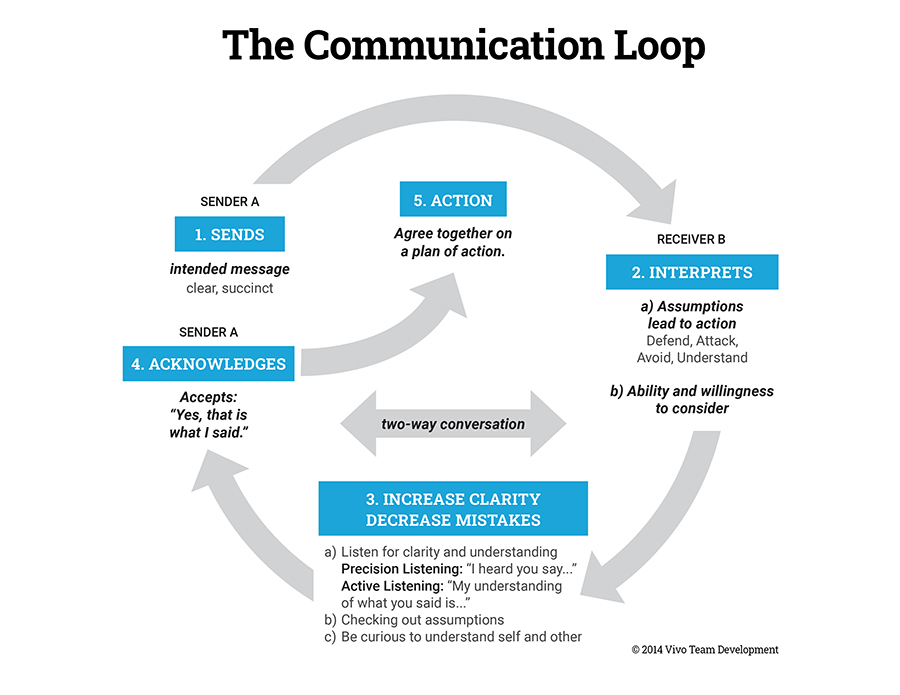By Renée Safrata, Founder and CEO, Vivo Team
The generation you grew up in can influence your behaviors. In the workplace, you might even notice fundamental generational differences regarding expectations, culture, performance, and engagement. Smart leaders will learn to work with these differences rather than against them.
Simply start by recognizing and understanding the generations and consider generation-specific values and blind spots (from Management Library):
- Generation Z (1997-2015) is motivated by security, may be more competitive, desires independence, will multi-task, is more entrepreneurial, wants to communicate face-to-face, is truly digital-native, and wants to be catered to.
- Millennials (1981-1996) value collaborative workplaces, are achievement-oriented, highly creative, positive, diverse, fun, flexible and continuously provide feedback.
- Generation X (1965-1980) values workplaces that are positive, fun, efficient, fast-paced, flexible, informal, and have access to leadership and information.
- Baby Boomers (1946-1964) value workplaces that have flat hierarchies, democratic cultures, humane values, equal opportunities, and warm and friendly environments.
- Traditionalists/Silent Generation (1928-1945) value workplaces that are conservative, hierarchical, and have a clear chain of command and top-down management.
Once you’ve identified these values and potential blind spots, it’s time to transition your focus to the workplace: How can you actively apply these differences and more importantly, how can you use them to your advantage? The key is clear and open communication.
We all make assumptions; we can’t help it! The kinds of assumptions one makes can differ greatly from one generation to the next. This can lead to misunderstanding and low collaboration.
Manage assumptions and misunderstandings by learning and practicing The Communication Loop—a model for effective team communication that facilitates active listening.
Let’s dig into this a little more.
Step 1: Person A (the sender of the message) should be clear and succinct.
Step 2: Person B (the receiver of the message) may make assumptions or filter the message based on their generational values. If the communication ends there, there could be misunderstandings that lead the receiver to defend, attack or avoid instead of understanding the intended message.
Step 3: Here, the receiver of the message should engage in a two-way conversion by listening for clarity/understanding and repeating the message back to the sender. This can be done with either precision listening (“I heard you say…”) or active listening (“My understanding of what you said is…”).
Step 4: The sender then has the opportunity to agree (“Yes, that is what I said…) or clarify if there is a misunderstanding—in the latter case the receiver would continue to repeat back until the sender acknowledges that the message received is correct.
Step 5: Now that the message is clear and agreed on, the sender and receiver can agree on a plan of action.

Actively trying to understand what the other person is saying by repeating back is the most constructive approach for clear communication and to bridge the generation gap. If the receiver brings an ability and a willingness to consider the message, the two-way conversation can be very effective.
The best part is, with an agreed-upon model of effective communication assumptions and perceived differences between the generations will not come into play.
Commit to The Communication Loop; be mindful of the filters and assumptions you make; commit to active listening to increase cohesion and productivity; and ask for and give feedback to make necessary course corrections.
By following these steps and upholding these commitments you’ll be set up to successfully lead a multi-generational workforce.
About Renée Safrata, Founder and CEO, Vivo Team
Having worked with more than 3,000 companies and executives over the past 30+ years, Renée firmly believes that connection is what ultimately drives productivity and directly contributes to results. Recognizing early on the future demand for digital workplace learning, she now has over 10 years experience creating and delivering educating, entertaining, and unique virtual learning experiences.
About Vivo Team
Watch your workplace culture and profitability soar! Vivo Team’s full spectrum learning experience develops competence, motivation, and collaboration among your leaders and teams through live, online training, coaching, and people analytics. The content and format are based on the latest, proven research in learning and development.

